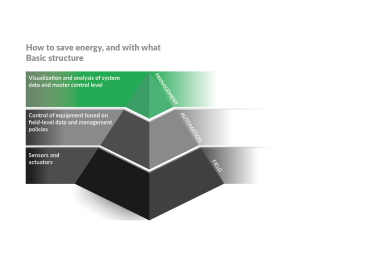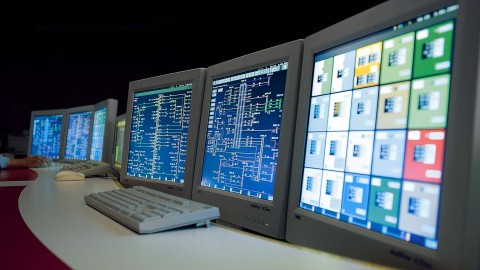Smart solutions instead of panaceas!
What does building automation mean to you? Just managing entire buildings? Or is it a broader term that encompasses everything done to optimize building operation (management and control)? In this article, we answer these and many other questions.
The desire to optimize building operation often starts with concrete things such as controlling:
- Lighting
- Individual rooms
- Ventilation
- Air-conditioning
- Other systems
The main goals or motivations are:
- Saving energy
- Making buildings more efficient
- Generally adapting building / room use and operation to occupants’ needs
- Protecting the environment
Real-life examples can illustrate how these kinds of building automation initiatives work. Let us start with an air-conditioning control system:
A building with fully air-conditioned rooms and individual room controls can maintain a temperature of 18 to 23 °C in each room. But what do you do about wasted energy? And what does that mean? For example, how can you keep the air-conditioning from running when the window is open?
Learn the basics of smart energy management through building automation in this article!
Building automation is often viewed as an energy management tool that can answer all questions, solve problems and manage usage scenarios. But some systems do not address the deeper problem. Solutions that do are smart – i.e. fast, low-cost and effective.
Instead of an energy management tool, we prefer to rely on a wireless switch and a relay. It tells the air-conditioning unit when the window is open, prompting the air-conditioning unit to automatically turn off. If you equip a radiator with the same relay, it will drop down to Setting 2 (the lowest possible setting without completely cooling off) as soon as the window is opened. Once the window is closed, the radiator will start heating up with a few minutes’ delay.
There is no easier or faster way to save energy. This is where energy management begins. Low upfront costs with large savings in a short time frame.
How does the market work?
We have seen many facility owners tackle these challenges with an over-engineered roll-out instead of a smart approach. Why is that? After all, the solution cannot always require an expensive, monolithic hardware and software package. The large upfront costs, incurred before waste has even been identified, are often recouped much later – if at all: The investment cost is often all out of proportion to the payback period.
What should you look for when starting a building automation initiative?
One key factor is manufacturer independence. Why? Manufacturers often provide an entire portfolio of hardware and software. However, each portfolio has strengths and weaknesses. Manufacturer independence turns suppliers into solution providers and, to some extent, industry providers. Smart solution providers can identify quick wins and capture them with fast, low-cost solutions.
Manufacturer independence is thus not the only key ingredient. It takes a combination of:
- Manufacturer independence
- Consulting skills
- Ability to execute
- Pragmatism
- Empathy and understanding for the customer’s problems
This combination helps to ensure that solutions are right-sized to the customer’s needs.
How do you know which hybrid solution works?
Experience matters when assessing the quality and feasibility of hybrid solutions. It takes experience in implementing solutions as well as good relationships with established manufacturers to know what requirements and goals are needed and how a particular solution will function. That helps produce low-cost, high-quality solutions.
Factsheet: “Fast track to a smart building”
See our free whitepaper, “Fast track to a smart building”, to learn how to implement truly smart solutions and understand the importance of the four-phase process.
If you have technical difficulties sending the form, please contact us by e-mail at [email protected] .






